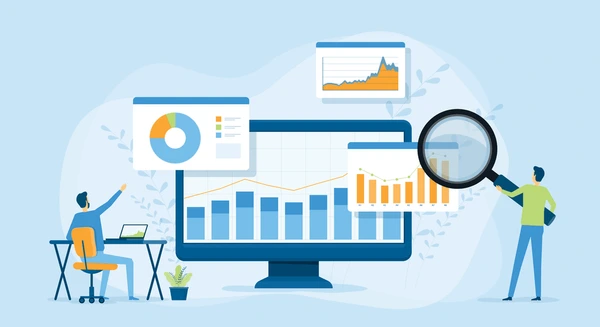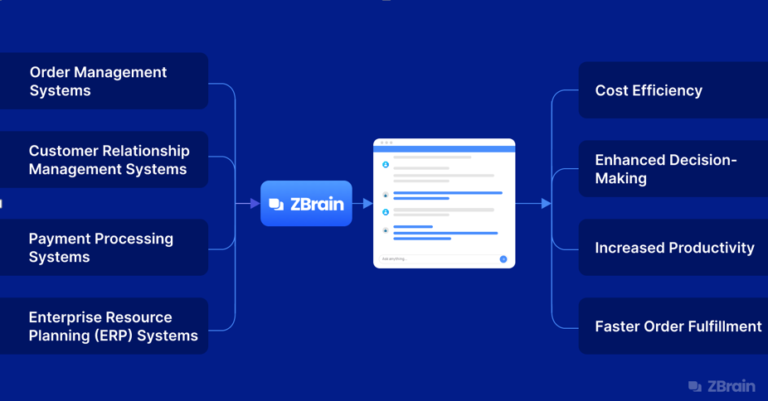The Role of Retail Analytics Software in Modern Operations Management
In today’s dynamic marketplace, retail operations management has grown far more complex than simply tracking inventory or managing staff schedules. Retailers now operate in a data-driven world where timely insights determine who leads and who lags behind. At the center of this transformation is the best retail analytics software, a vital tool helping retailers streamline operations, maximize profits, and elevate customer experiences.
This blog explores how retail analytics software is reshaping operations management, enabling retailers to achieve precision, agility, and sustained growth.
The Changing Landscape of Retail Operations Management
Modern retail operations management is no longer limited to basic logistics or sales reports. Retailers must now balance multiple moving parts:
- Diverse sales channels (in-store, online, mobile)
- Fluctuating customer demand
- Complex inventory networks
- Labor management
- Customer experience optimization
Managing these aspects effectively requires more than intuition. This is where the best retail analytics software plays a transformative role by converting raw data into actionable insights that drive smarter decisions.
Core Functions of the Best Retail Analytics Software
1. Unified Data Aggregation
The best retail analytics software integrates data from various sources — POS systems, traffic counters, inventory databases, employee schedules, and customer interactions — into a centralized platform. This unified view allows operations managers to detect patterns and correlations that would otherwise go unnoticed in siloed reports.
2. Real-Time Performance Monitoring
While real-time monitoring isn’t always necessary for every decision, frequent performance snapshots allow managers to stay informed. For example, sudden dips in sales conversion rates or unusual customer traffic trends can be detected early, enabling proactive adjustments in staffing or promotional strategies.
3. Rep-Level Sales Insights
Frontline staff directly impact sales outcomes. Retail operations management teams can leverage rep-level sales conversion reports to identify high performers and areas where additional coaching is needed. This individual-level visibility empowers managers to develop tailored training programs that improve sales effectiveness across teams.
4. Inventory Optimization
Effective inventory management is crucial for reducing stockouts and excess inventory. The best retail analytics software analyzes sales trends, seasonal demand, and customer preferences to ensure the right products are available at the right time. This precision not only prevents lost sales but also minimizes storage costs.
5. Traffic Pattern Analysis
Knowing when customers visit helps optimize labor scheduling. Retail operations management uses traffic data to align staffing levels with peak periods, ensuring optimal service without overspending on labor. The software’s ability to distinguish between customers and non-customers through customer-only traffic counts further sharpens this analysis.
The Strategic Role of Analytics in Operations Management
Enabling Data-Driven Decisions
The best retail analytics software eliminates guesswork. With clean, verified data, retailers gain the confidence to make informed decisions on everything from pricing strategies to staffing models.
Enhancing Operational Efficiency
Operational inefficiencies — late openings, unattended customers, inconsistent staffing — erode profitability. Retail analytics highlights these issues with hard data, allowing retail operations management to implement corrective measures quickly.
Driving Continuous Improvement
Analytics isn’t a one-time solution; it creates a culture of continuous improvement. By regularly reviewing key performance indicators (KPIs), managers can spot recurring trends, experiment with process adjustments, and measure their impact over time.
Key Benefits of Using the Best Retail Analytics Software
1. Improved Profit Margins
By identifying and addressing operational leaks, retailers can convert previously missed opportunities into sales.
2. Enhanced Customer Experience
Timely staffing adjustments and personalized service directly improve customer satisfaction, driving repeat business and loyalty.
3. Optimized Labor Costs
Precise scheduling minimizes payroll waste while ensuring adequate customer coverage during peak periods.
4. Informed Inventory Management
Avoiding stockouts and overstocks protects revenue and reduces holding costs.
5. Stronger Managerial Oversight
With access to granular data on store-level performance, regional and district managers gain better visibility into store operations, enabling more effective oversight and support.
How Retail Analytics Software Supports Store-Level Operations
At the store level, daily retail operations management decisions revolve around three main priorities: staffing, inventory, and customer engagement. The best retail analytics software addresses each of these areas:
- Staffing: Aligns schedules with predicted traffic volumes to ensure proper coverage.
- Inventory: Provides real-time sales data to prevent stock imbalances.
- Customer Engagement: Monitors average interaction times and unattended customer rates, ensuring customers receive timely assistance.
By enabling store managers to address these areas with data-backed precision, retailers reduce friction points that often lead to lost sales.
The Evolution of Retail Operations Management with Analytics
The integration of the best retail analytics software has moved operations management from reactive to proactive. Traditional approaches often relied on lagging indicators, such as monthly sales reports, to inform decisions. Today, analytics provide near-immediate feedback, allowing retailers to:
- Anticipate demand fluctuations
- Identify emerging issues before they escalate
- Adapt quickly to market shifts
Retailers who embrace analytics gain a competitive edge, improving both short-term performance and long-term resilience.
Read Also: Passwords Are Dead: Future of Digital Authentication
Conclusion
In a highly competitive environment, effective retail operations management demands more than experience—it requires timely, accurate data. The best retail analytics software empowers retailers with the insights they need to optimize operations, boost profitability, and create exceptional customer experiences.
Retail success no longer belongs solely to those who work the hardest, but to those who work the smartest—by letting data guide every decision.
FAQs
Q1: Why is retail analytics important for operations management?
Retail analytics helps operations teams identify inefficiencies, optimize staffing, manage inventory, and improve customer service, all of which contribute to better financial performance.
Q2: Can retail analytics software integrate with my existing systems?
Yes. The best retail analytics software is designed to integrate with POS systems, traffic counters, cameras, and inventory platforms, providing a unified data view.
Q3: How soon can retailers expect to see results?
Many retailers experience measurable improvements within the first few months, especially when data insights are applied consistently by retail operations management.
Q4: Is retail analytics only for large retailers?
No. Retail analytics benefits businesses of all sizes by providing visibility into operations and enabling smarter decision-making.
Q5: Does retail analytics software require significant technical expertise?
Most leading retail analytics software solutions are designed for ease of use, with intuitive dashboards and actionable insights that don’t require advanced technical skills.






